- Bernard Preston homepage
- Arteries
Pathophysiology of atherosclerosis
Pathophysiology of atherosclerosis is irreversible; only prevention makes sense.
This is a long page and one of the most important at this site; if you want to live long in the land make for a focused half hour at least. Only read further when you have time to ponder.
So you have been informed you have a damaged aorta or perhaps worse still, hardening of the cerebral arteries. Actually, in this latter case it is likely your family that would be told; by the time it has been diagnosed there is a good chance you already have lost your marbles. And will not have a clue about the diseases of blood vessels.
Atherosclerosis or hardening of the arteries is a disease of civilisation. It's common in all Western societies and rare in those that have not come in contact with urbanisation.
It is also known as arteriosclerosis.
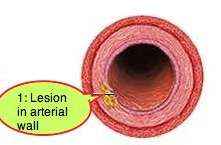
This page was last updated by Dr Bernard Preston on 4th February, 2024.
It is much worse in diabetics; type 2 is strongly associated with our Western lifestyle. Obesity is the number one cause and interestingly those who have regularly consumed artificially-sweetened beverages are even more at risk than those who enjoy their sugar colas.
"Those who had artificially-sweetened colas every day had an increased risk of 2.21 but those drank sugared beverages had a smaller yet still significant probability of 1.34 of getting type 2 diabetes, report researchers who followed 66,118 French women over fourteen years."
- American Journal of Clinical Nutrition(1)
The side effects of artificial sweeteners are even worse than drinks with sugar when it comes to glucose intolerance, metabolic syndrome and diabetes.
Diets where there is weight loss but all is soon regained also significantly increase the risk of cardiovascular events, report researchers in the New England Journal of Medicine.(2)
- It all begins with a small injury to a blood vessel wall. That could be a viral or bacterial infection, exposure to certain chemicals and smoking is considered the greatest risk factor. Something toxic causes a small lesion in the inner lining known as the intima.
- In those people with high LDL, the bad cholesterol, fat droplets start being deposited at the site of injury.
- AGEs or "advanced glycation end products" like red blood cells with an "extra sticky" attached glucose molecule start to collect at the injured site.
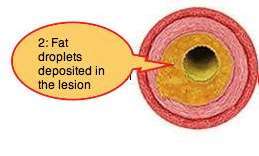
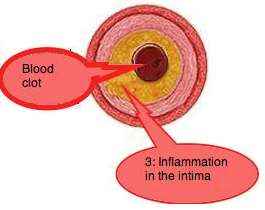
Atherosclerosis definition
This is an aside. What do the terms HDL and LDL mean and why are they so important? Read more at this site by typing
EXERCISE AND CHOLESTEROL into Site Search in the main menu above.
Pathophysiology of atherosclerosis
Pathophysiology of atherosclerosis causes hardening of the arteries.
The next steps in the atherosclerosis disease process are as follows.
- Droplets of fat in the intima of the blood vessel wall are recognised by the immune system as foreign bodies provoking an attack from T-cells seeking to protect the artery from the invading droplets. This is even more dangerous should this cholesterol have become oxidised, for example from repeated use of the same cooking oil.
- The T-cells especially do not recognise
the oxidised droplets of cholesterol in the wall of the artery as being
normal, attacking the enemy and setting up a powerful inflammatory
process deep within arteries; often at numerous sites throughout the circulatory system. Of this slow progression of serious disease
within our blood vessels we are totally unaware. We may feel perhaps
some malaise or tiredness but we cannot connect this as the
beginnings of hardening of the capillaries; this is the formation of atherosclerotic plaque.
- High levels of calcium in the blood results in deposition of the mineral at the injured site causing stiffening of the arteries; and hypertension.
- Most significantly the lumen of the artery is becoming smaller; and the heart has to pump harder to get sufficient blood through the narrowed vessel.
- Smooth muscles cells in the intima begin to proliferate, further narrowing the lumen of the artery.
-
"Sticky" blood cells now begin to attach themselves to the site of the
injury adding to the plaque. AGE products are formed when a diet chronically high in
refined carbohydrates like white rice or pasta releases a flood of glucose
molecules from the small intestine.
- A piece of this plaque called an embolus or clot breaks free traveling along the blood vessel until it reaches a small artery or vein in the lungs, brain or heart; an infarct, stroke or MI.
In short the pathophysiology of atherosclerosis is extremely complex and is still being unravelled by scientists.
"If the only tool you have is a hammer,
you tend to see every problem as a nail."
- Abraham Maslow
Prevention of Atherosclerosis
It's long been known that unrefined oats is the most powerful foodstuff in the fight to lower elevated bad cholesterol, a big factor in the causes and prevention of atherosclerosis.
In general unrefined grains promote greater well-being of the blood vessels but they are hard to get and there's a lot of deceit in the milling industry. That term "wholemeal" is usually a big fat lie.
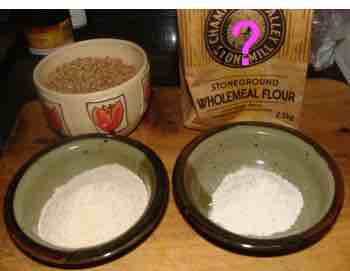 Fake "wholemeal"
Fake "wholemeal"A researcher at Tufts University Mohsen Meydani, working on the pathophysiology of atherosclerosis and nutrition has now proved that oats does much more than simply lower blood cholesterol. It contains an antioxidant that prevents sticky blood cells from adhering to the walls of damaged arteries; even reducing hypertension, for example.
Control of blood glucose is also central in the prevention of atherosclerosis. With nearly a half of folk in the Western world showing signs of prediabetes, it is little wonder that cardiovascular disease is so prevalent. The solution, unpopular though it may be is the avoidance of all refined carbohydrate.
It may seem hard to believe but in many Western countries the average person consumes 6 cups of sugar per week; that is over 40 teaspoons per day. This is one of the prime causes of obesity and diabetes; and the reason why Covid-19 deaths have reached over half a million in America.
Disappointed and angry, consumers are in denial. We simply cannot have our cake and eat it; except perhaps on high and holy days.
Can you imagine 150 pounds of sugar in one year? That is what the average person consumes. Then you get health nuts like Bernard Preston who has almost none; some people are having far more.
"Never before better fed yet so poorly nourished."
Work is continuing on how oats not only reduces the inflammatory changes that build up in arterial cells damaged by atherosclerosis disease, but also helps by reducing the proliferation of damaged smooth muscle than lines the inner walls of all arteries.
So do not be totally despondent if you have been told you have atherosclerosis of the aorta for example, the very large artery that supplies the bowel and legs.
Whilst attempts to reverse atherosclerosis are probably in vain you can do much to prevent the further proliferation of atherosclerosis symptoms and disease at this site of inflammation and at new sites.
How much a loved one with cerebral atherosclerosis can be helped is less certain. But what's the harm in trying 3 tablespoons of unrefined oats every morning for breakfast? It's almost certainly cheaper than all the frosties, crispies and toasties on the market.
More research is now suggesting that that raised bad cholesterol is not caused by animal fat; highly glycemic carbs are the demon. Butter is back. White rice and bread are definitely out as are all the sugary bagels and refined flour goodies; chocolate cake and the like.
Whoops that was a slip of the tongue; baddies, not goodies.
Dr Campbell's twenty year diabetes rule makes for sobering reading; just 20 tsp of sugar per day is all it takes.
Just as important is researchers are now finding that the antioxidant in oats also prevents any malignant cells that line the inner wall of your bowel from proliferating too.
Retrogradation
Even better is to cook enough oats for several days, cool it in the fridge overnight and then use it to make your delicious breakfast; a process called retrogradation makes it difficult for enzymes to digest the starch in the small intestine. It passes straight through becoming a "prebiotic" for the bugs in the colon that form healthy short chain fatty acids instead of glucose, with no insulin rush.
There's lots of research coming out now about the microbiota in the large intestine; feed them with this resistant starch that is not digested in the small intestine and you will be far less likely to become diabetic or suffer from an autoimmune disease like lupus.
The whole subject of phytochemical foods is obviously vast; one can labour and fret over it but, much simpler, is to enjoy a wide array of coloured and unrefined foods. Just the influence of walnuts on blood pressure reminds us of the importance of a healthy breakfast.
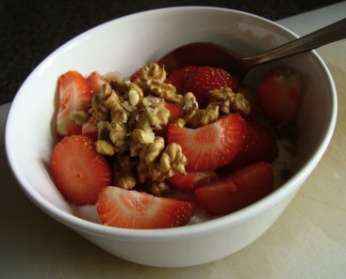
Omega-3
Omega 3 fatty acids are found mainly in certainly oily foods; especially fatty fish, freshly-ground flaxseeds and walnuts. And to a lesser extent others like pecans; they are a vital part in the fight against cardiovascular disease.
They are "essential" fatty acids, meaning your body can't make them. If you do not eat omega-3 foods regularly, you will develop atherosclerosis of the arteries.
- How to make fish stock
- Flax seed nutrition information ...
- Pecans nutrition ...
Dairy products remain controversial, not least because the milk from a free range, pasture-fed dairy cow is quite different than that from the poor beast that's never seen a blade of green grass. Nevertheless, butter is back with a vengeance; and should probably never have been banned.
Atherosclerosis symptoms
It
all depends on which artery is blocked. If it's one of the lumbar
arteries, then you are likely to have repeated episodes of lower back
pain; because the injured tissues in your back will simply not be
getting enough blood. Atherosclerosis symptoms are complex and varied.
If it is one of the coronary arteries, then chest pain with exercise will be the order of the day. The heart muscle doesn't get enough blood; angina.
If it's one of the iliac arteries that pass through the groin on the way to the leg, then you will get pain in the leg WITH EXERCISE. As soon as you rest, the pain goes away.
If you love to read, enjoy this freebie from my third book, Stones in my Clog, fascinating anecdotes from Bernie Preston's chiropractic coalface. Is it possible that a chiropractor could diagnose a blocked artery that medicine had missed for two years? Nope, it wasn't sciatica after all as they told him.
Two simple basic tests made the diagnosis, confirmed by an angiogram but the old rule repeats itself again: IF YOU DON'T LOOK FOR IT, YOU WILL NOT FIND IT.
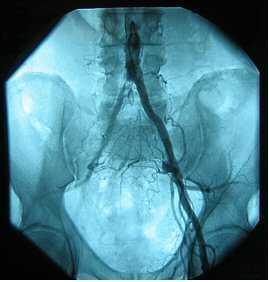
This is the arteriogram taken after Bernie referred his patient to a vascular surgeon. Truth be told: I wasn't surprised, but all his doctors were. Walking gave him pain in the calf and he didn't have a pulse in the ankle.
One of the best things for early cerebral
atherosclerosis is brain exercise. Feed your brain, have lots of laughs and not a few sober
moments, and support this website. Just $3.39 on your Kindle from Amazon.
Newsletter
Our newsletter is entitled "create a cyan zone" at your home, preserving both yourself and Mother Earth for future generations; and the family too, of course. We promise not to spam you with daily emails promoting various products. You may get an occasional nudge to buy one of my books.
Here are the back issues.
- Lifestyle and ideal body weight
- What are ultra-processed foods?
- Investing in long-term health
- Diseases from plastic exposure
- Intensive lifestyle management for obesity has limited value
- A world largely devoid of Parkinson's Disease
- The impact of friendly bacteria in the tum on the prevention of cancer
- There's a hole in the bucket
- Everyone is talking about weight loss drugs
- Pull the sweet tooth
- If you suffer from heartburn plant a susu
- Refined maize meal and stunting
- Should agriculture and industry get priority for water and electricity?
- Nature is calling
- Mill your own flour
- Bake your own sourdough bread
- Microplastics from our water
- Alternative types of water storage
- Wear your clothes out
- Comfort foods
- Create a bee-friendly environment
- Go to bed slightly hungry
- Keep bees
- Blue zone folk are religious
- Reduce plastic waste
- Family is important
- What can go in compost?
- Grow broad beans for longevity
- Harvest and store sunshine
- Blue zone exercise
- Harvest and store your rainwater
- Create a cyan zone at your home
Find the links to those topics highlighted in bold by copying and pasting into the Site Search function in the navigation bar above.
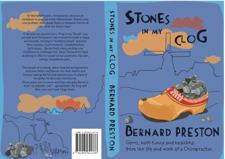
Atherosclerosis of the aorta
The pathophysiology of atherosclerosis also weakens the walls of arteries allowing for a bulging of the vessel known as an "aneurism." They are silent and deadly; it all begins with inflammation and atherosclerosis of the aorta, for example, or in the brain.
As the blood pressure rises, caused by the general narrowing of the arteries forcing the heart to pump harder, the bulge in the aneurism silently increases in size. Then one day, poof, a bout of coughing or bearing down too hard on the toilet increases the BP sufficiently to burst the vessel; a fit of rage, or just rushing across a busy street too. In the case of the aorta, the usual result is very sudden death.
Magnesium and the heart are intimately connected.

A narrowing of the artery by atherosclerosis of the aorta simply reduces blood flow to the various organs, notably the kidneys, the intestines and the spine; the brain and legs too.
Intermittent Claudication
Intermittent claudication causes pain in muscles whilst exercising, but quickly relieved by rest; it's a sure sign of an advanced stage of the pathophysiology of atherosclerosis.
Angina of the heart is another example.
This reduced blood flow to the legs produces a strange syndrome characterised by no symptoms whilst the sufferer is at rest, but pain in a muscle starved of oxygen as soon as it is forced to exercise.
Stopping the activity immediately alleviates the pain as the need for oxygen in the muscle is reduced.
Walking produces severe pain in the calf; cycling in the thigh muscle.
The sign your DC will look for to distinguish between claudication and sciatica is the presence of the pulse in the ankle and on the foot.
Low Back Pain
Postmortem studies have found a strong correlation between artheriosclerosis of the aorta and degenerative disc disease; that means chronic LBP. The tissues of the spine simply don't get enough oxygen to heal after injury resulting in the development of a difficult lower back.
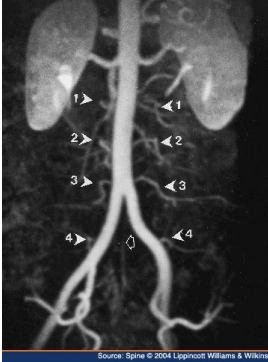
Homocysteine
Homocysteine is the normal breakdown product of protein metabolism. But it's highly toxic to blood vessels and is immediately converted into two other substances in the body. But this process is utterly dependent on certainly B vitamins and zinc. Without them there is certain onset of inflammation in the body including the arteries; pathophysiology of atherosclerosis.
Folk who do not consume enough of these vital substances will have raised homocysteine in the blood. It's even more toxic than raised LDL cholesterol; perhaps surprisingly free range eggs for their choline and omega-3 are part of the solution.
One of the those substances is betaine, found naturally in beets, after which it is named, spinach and 100% whole wheat; a high dietary intake decreases the inflammatory markers by more than 20%.
It's one of the reasons why those enjoying whole grains for breakfast, but not if they are refined[6], have a 29% lower risk of heart failure.
That could be a whole grain muesli, cooked rolled oats, or just a slice of 100% wheat toast; many folk have stomach pain with a raw breakfast cereal.
Best to my mind is a porridge and Eggs Florentine on a slice of 100% wholewheat toast; they contain plenty of betaine, choline and magnesium; and most of the B vitamins.
Trans fats
Fat in nature is entirely of the 'cis' type; to make it solid, food companies hydrogenate it to the 'trans' form; margarine is easier to spread on your bread that sunflower oil.
But there's a simply huge problem; trans fats, by the same mechanism as high cholesterol, inhibit the responsiveness of a growth factor in the inner lining of arteries that prevents atherosclerosis, or hardening of the arteries.
If you are taking high blood pressure pills, it's very likely because you were a smoker, or had a diet high in cholesterol or trans fats.
Food companies are compelled (in theory) to list trans fats, but by using damn lies statistics they manipulate the figures to conceal. 20% of the fat in Marmite for example is trans fat, but they list it as zero per helping. Bettercreme sucks is another.
Magnesium
Magnesium is a vital mineral easily lost in the water used to cook vegetables; it's very important to prevent the development of the pathophysiology of atherosclerosis in blood vessels.
There's quite strong research coming out now that adequate magnesium
in the diet is vital for preventing the inflammation that affects the
wall of the arteries, and especially those of the heart.
How much is adequate? About 400mg per day and not many people on a typical Western diet are getting enough. Unfortunately, taking it in pill form is not as affective as getting it from your food. Dark green leafy veg, beans, nuts; look no further than Swiss chard food.
The beauty of a diet rich in these coloured foods is that not only will you be enjoying the protection of minerals like magnesium, but also phytochemicals like the kaempferol and cancer prevention.
Research
in Japan shows that getting enough magnesium will reduce your chances
of having a heart attack or stroke by a massive 50%. See how you can
EASILY increase the mineral from your food.
Calcium
"There is no adverse relationship between DIETARY calcium intake and coronary cardiovascular events."
- Professor Matthew J. Budoff, MD, chair of Preventative Cardiology Lundquist Institute.
However researchers are consistently finding that the kidneys cannot handle high levels of calcium from supplements, especially if ultra vitamin D is also prescribed; the mineral is deposited in the lumen of the arteries causing hypertension and an increased level of CV disease.
Phosphates
High serum phosphate is also associated with atherosclerosis; they cause damage to the inner lining of the blood vessels with consequent calcification leading to hypertension. It has long been known to be associated with chronic kidney disease, stroke and heart attacks[3].
That serum phosphate comes from two sources, one of which cannot nor should be avoided; meat, starches and legumes. It is impossible to lower that without cause a protein deficiency. In our food it is organically bound and only about a half is absorbed from the gut.
However, the other source, which is not organically bound, is almost completely absorbed in the alimentary canal; this is the cause of high serum phosphate and the consequent damage to our blood vessels leading to a host of serious diseases including blindness[4]. Processed meat, ham, sausages, baked good and soft drinks are the source of this killer.
Food additives like flavour enhancers, preservatives and those that preserve the colour of our food are particularly high in phosphorus; and those that help retain moisture in baked goods too.
Going to seed
For plants, going to seed is a normal part of the cycle of life and death.
But figuratively speaking, it's the avoidable part of slipping relentlessly towards an early, premature demise. And no where is it seen more clearly than in the aging of our blood vessels. When they are unable to get fresh, nutrient rich blood to our body parts, it is the beginning of the end.
Not much is written about the venous return of blood, but it is important too. There is new research coming out that even diseases like MS may be caused by a poor vascular system removing wastes from the brain.
Whether it's the brain, the heart, the musculo skeletal system, the pathophysiology of atherosclerosis is a subject that should absorbe us if we plan to live to a healthy and hearty eighty, with all our marbles intact. Have you heard of blue zone longevity? Ten times as many people live to 100 and still strong in their nineties is not unusual.
A good place to start is grinding flax seeds.
Foods that reduce inflammation
Foods to reduce inflammation is primarily about blood vessels and atherosclerosis, but also concerns the pain in muscles and joints. For example, the capsaicin health benefits in the chili family give protection to the body; we particularly like growing peppadews which can be hot but are milder than jalapenos and much less fiery than most of the pepper family.
Having said that, this green chili sauce recipe is a great favourite.
These all belong to what is now being called food for the brain.
Natural honeycomb is rich in pollen which contains many compounds that inhibit platelet induction and increase nitric oxide synthesis, lowering blood pressure[7]. Beekeeping is strongly associated with longevity.
- A Family Affair reviews … hold on to your hat if you decide to read my latest novel.
- Consumption of artificially and sugar-sweetened beverages and incident type 2 diabetes
- Yoyo diets and coronary artery disease
- Phosphorus Content in Commonly Consumed Beverages
- Major cause of blindness linked to calcium phosphate deposits in the eye.
- What is antioxidant good for?
- Breakfast cereals and risk of heart failure in the physicians' health study I.
- Bee Pollen: Current Status and Therapeutic Potential
When browsing use right click and "Open Link in New Tab" or you may get a bad gateway signal.
If you read just one book a month, you'll probably fall short of a thousand in your whole life, and most likely nearer 500. Enjoying a good book is like having a private conversation with the author.
If you are enjoying Bernard-Preston.com, then perhaps I can invite you to a journey through the polders of Holland. That's how you can support this site, and enrich your own life with some easy bedside reading and stepping up to better health.
My books are available from Amazon on Kindle.
Did you find this page interesting? How about forwarding it to a friendly book or food junkie? Better still, a social media tick would help.
- Bernard Preston homepage
- Arteries
Address:
56 Groenekloof Rd,
Hilton, KZN
South Africa
Website:
https://www.bernard-preston.com